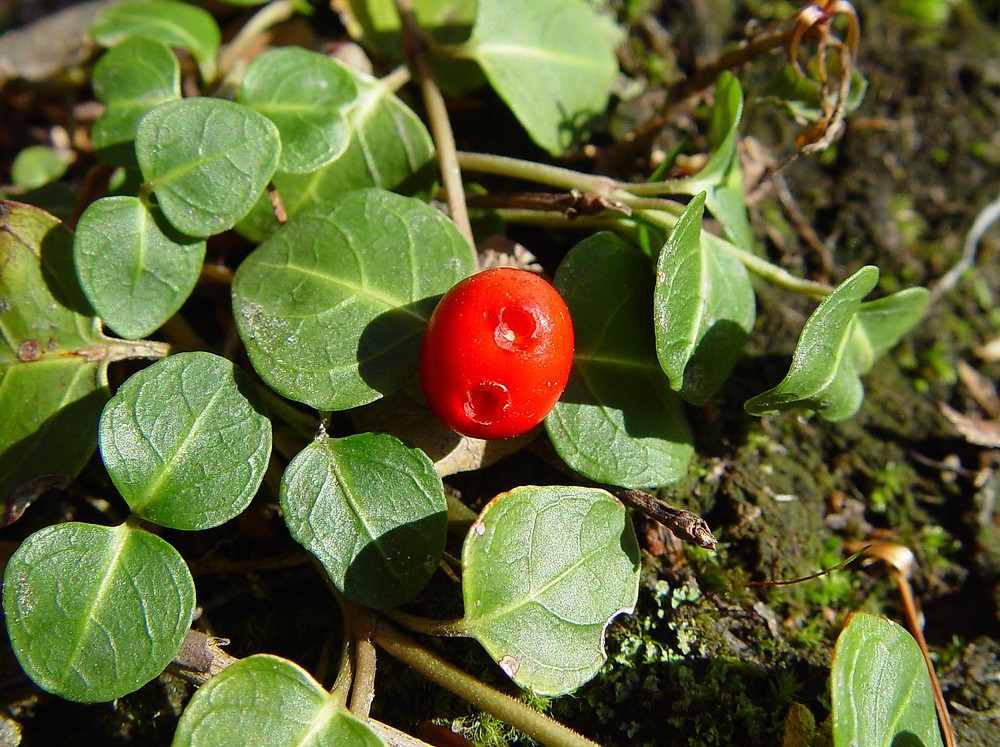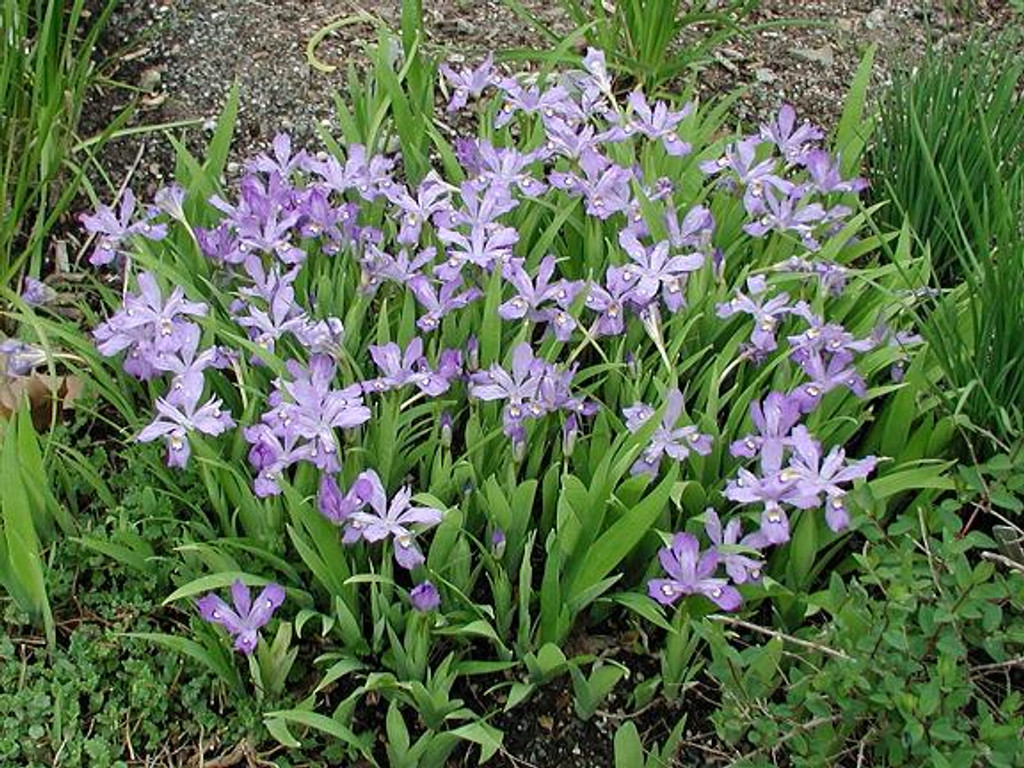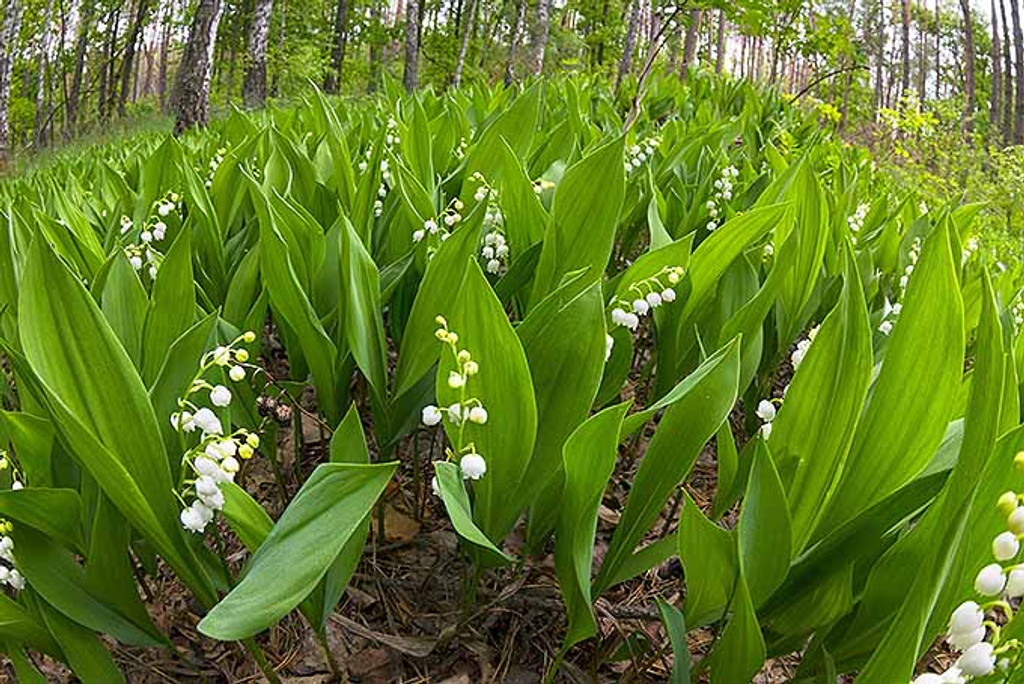24th Mar 2023
Ground cover plants have numeral benefits.
Ground cover plants have numeral benefits.
Using plants as a ground cover is a great way to improve soil health, prevent erosion, reduce weeds, and create an attractive landscape. Here are some steps to follow when using plants as a ground cover:
First, Choose the right plants: Select well-suited plants for your climate and soil type. Look for plants with low growth habits, spread quickly, and tolerate foot traffic if necessary. Some popular ground cover plants include Iris Cristata, Trout Lily, and Lily of the Valley. Then, prepare the soil: Prepare the ground by removing any existing weeds or debris and loosening the soil 6 inches. Add compost or other organic matter to improve soil health if your soil is poor.
After this, plant the ground cover: Space the plants according to their recommended spacing and plant them at the same depth as in their nursery pots. Water the plants well after planting to help them establish.
Now, you are ready to mulch the area: Apply a layer over the area to help retain moisture, suppress weeds, and protect the plants. You can use various materials for mulch, such as shredded bark, straw, or leaves.
How do you maintain ground covers?
Water the plants regularly to moisten the soil, especially during dry periods. Prune the plants to keep them from becoming too tall or spreading too far. If the ground cover is too thick, you can remove some plants.
Following these steps, you can create an attractive, functional ground cover using plants. Remember to choose the right plants for your climate and soil type, prepare the soil properly, and maintain the ground cover to ensure its success.
Using Plants as a Ground Cover: Benefits and Tips for Success
When landscaping, choosing the right ground cover can make all the difference. Ground cover plants are low-growing, spreading plants that can cover large soil areas. Not only do they add beauty and texture to your landscape, but they also have several practical benefits. In this blog post, we'll explore the benefits of using plants as a ground cover and offer tips for success.
What are the benefits of using plants as a ground cover?
Reduces erosion: Ground cover plants help to anchor the soil and prevent deterioration caused by wind and water.
Suppresses weeds: Ground cover plants can help to suppress weeds, reducing the need for chemical herbicides.
Improves soil health: Ground cover plants can help to improve soil health by increasing organic matter, improving soil structure, and promoting beneficial microorganisms.
Attracts beneficial insects: Some ground cover plants, such as clover and vetch, can attract beneficial insects like bees and butterflies.
Saves water: Ground cover plants can help to reduce water loss from the soil, allowing you to conserve water and save on your water bill.
Tips for Success
Choose the right plants: When selecting ground cover plants, consider your climate, soil type, and sun exposure. Look for plants well-suited for your growing conditions and can tolerate foot traffic if necessary.
Some popular ground cover plants include Iris Cristata, Trout Lily, and Lily of the Valley. When selecting plants, consider their growth habits and how they will interact with other plants in your landscape.
Using plants as a ground cover can improve soil health, prevent erosion, reduce weeds, and create an attractive landscape. By choosing the right plants, preparing the soil properly, and maintaining the ground cover, you can enjoy the many benefits of using plants as a ground cover in your garden.
Benefits of choosing these plants:
Iris Cristata, commonly known as Crested Iris, is a perennial flowering plant native to eastern North America, from Ontario, Canada, south to Georgia, United States. It belongs to the family Iridaceae and is a low-growing herbaceous plant that typically grows up to 6-8 inches tall and spreads through rhizomes to form a dense mat.
The plant has attractive foliage with narrow, grass-like leaves that are green and crested. The leaves grow in a fan-like arrangement and form a clump. The plant produces beautiful flowers that bloom in late spring to early summer, typically from May to June. The flowers are pale blue to lavender blue and have a distinct yellow or white crest on the falls (lower petals).
Iris Cristata prefers moist, well-drained soil and partial to full shade. It often grows in woodland settings, along stream banks, or in damp, shady areas. The plant is low-maintenance and easy to grow, making it an excellent choice for a woodland or rock garden.
In addition to its ornamental value, Iris Cristata has some medicinal uses. Native Americans used the plant to treat various ailments, including headaches, colds, and coughs. The plant contains iridin, a compound shown to have anti-inflammatory properties.
Overall, Iris Cristata is a beautiful and valuable plant that can add interest and beauty to various settings.
Trout lily, also known as yellow trout lily or dogtooth violet, is a perennial flowering plant native to eastern North America. It belongs to the family Liliaceae and is known for its striking yellow flowers and mottled green leaves.
The plant typically grows 6-12 inches tall and spreads through rhizomes to form dense colonies. It blooms in early spring, typically from March to May, and produces one to three nodding yellow flowers on each stem. The flowers have six petal-like tepals and are bell-shaped, measuring about 1 inch long. The plant leaves are mottled with green and brown and are shaped like a trout's mouth, hence the name "trout lily." The leaves grow in a basal rosette and can be up to 6 inches long.
Trout lily prefers moist, well-drained soil and partial to full shade. It is often found growing in deciduous woodlands and along stream banks. The plant is a temporary early spring, meaning it blooms and sets seeds before the trees leaf out and shade the forest floor.
Trout lily is an important food source for many animals, including white-tailed deer, wild turkey, and several species of rodents. The plant contains a chemical compound called colchicine, which is used in medicine to treat gout and other conditions.
In addition to its ornamental and ecological value, trout lily has cultural significance. It has been used in traditional medicine by Native American tribes, who used it to treat various ailments, including tuberculosis, coughs, and colds.
The trout lily is a beautiful and fascinating plant that adds color and interest to the woodland landscape. Its early spring blooming period makes it a welcome sight for many people, signaling the arrival of spring after a long winter.
Lily of the Valley, also known by its scientific name Convallaria majalis, is a perennial herbaceous flowering plant native to Europe and parts of Asia. It belongs to the family Asparagaceae and is known for its sweetly scented white bell-shaped flowers that bloom late spring to early summer.
The plant typically grows 6-8 inches tall and spreads through rhizomes to form dense colonies. The leaves are dark green, glossy, and shaped like a lance. The flowers are small, about ½ inch long, and arranged on a short stem. They appear in clusters of 5-15 flowers and have a sweet fragrance that is highly prized in perfumery.
Lily of the Valley prefers partial to full shade and moist, well-drained soil. It is often found growing in deciduous woodlands and along stream banks. The highly toxic plant contains cardiac glycosides that can cause nausea, vomiting, and even cardiac arrest if ingested.
Despite its toxicity, Lily of the Valley has been used in traditional medicine for centuries. It has been used to aide a variety of health issues, including heart conditions, epilepsy, and headaches. It is well know for traditional Chinese medicine to treat depression.
In addition to its medicinal uses, Lily of the Valley has cultural significance. It is a popular flower for weddings and is said to symbolize humility, purity, and happiness. It is also the birth flower for the month of May.
Overall, Lily of the Valley is a beautiful and fragrant plant that adds charm and elegance to the garden landscape. Its sweet fragrance and delicate appearance make it a favorite of many gardeners and flower enthusiasts.





